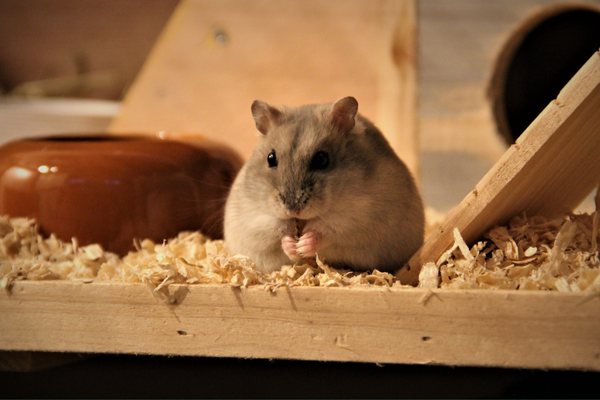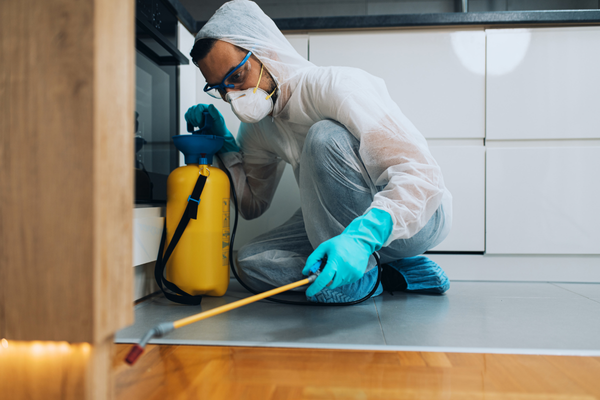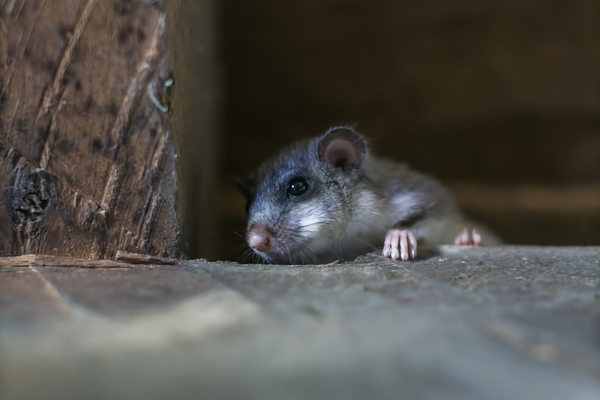That scratching sound you hear above your head at night isn’t just the house settling. For many homeowners in Jupiter, FL, it is the first sign of an unwanted houseguest. Your attic is a perfect home for pests. It is warm, safe from weather, and full of soft materials for them to build nests. These creatures are not just noisy neighbors. They can cause big problems. Rodents can chew through wood, tear up air ducts, and destroy personal items you have stored away. They also leave behind droppings that can make your family sick. One of the biggest dangers is when they chew on electrical wires. This can create a serious fire hazard, putting your whole home at risk. This guide will give you the knowledge you need. It covers how to find out if you have a pest problem, how to clean it up safely, and how to keep them from ever coming back.
Quick Facts About Attic Pests
- What are the most common attic pests? The most frequent visitors are rats, mice, squirrels, and even raccoons.
- What is the top sign of an infestation? Finding droppings or seeing gnaw marks on wood or wires is the clearest sign.
- What is the biggest risk? The danger of a house fire from chewed electrical wiring is the most serious threat.
- What is the best prevention method? The most effective step is sealing every single entry point that is bigger than a dime.
Table of Contents

What Are the Signs of Rodents in an Attic?
Finding a pest problem early is the secret to stopping major damage before it starts. Many people ignore the first quiet sounds or tiny signs, thinking it is nothing. But waiting too long lets the problem grow. A small family of mice can turn into a large infestation very quickly. Being watchful and knowing what to look for can save you a lot of trouble. You do not have to be an expert to be a good detective in your own home. Just pay attention to the little details. Look and listen for anything that seems out of place. Here are the most common clues that pests have moved into your attic.
- Droppings and Urine Stains: This is often the first thing people find. Mouse droppings are very small, about the size of a grain of rice, and have pointed ends. Rat droppings are bigger, up to three-quarters of an inch long, and have rounded ends. You will find them in corners, along walls, and near any food source. Urine can leave yellowish stains on wood, insulation, or stored boxes. Over time, these create a very bad smell.
- Gnaw Marks: Rodents have to chew on things to keep their teeth from getting too long. They are not picky about what they chew. You might see marks on wooden support beams, PVC pipes, and especially electrical wires. Chewed wires are very dangerous and a leading cause of house fires. If you see wood shavings or bits of plastic, look closer for these telltale marks.
- Nests: Pests want a cozy place to live and raise their young. They will build nests using whatever they can find. The most common nesting material in an attic is your insulation. They will shred it and pull it into piles. They will also use cardboard, paper, fabrics, and anything else soft they can carry. Finding a pile of shredded material in a quiet corner is a sure sign of a nest.
- Strange Noises: Most attic pests are active at night. When your home is quiet, you are more likely to hear them. Listen for scratching, scurrying, or rolling sounds. You might hear squeaking if they are communicating with each other. The sounds might seem faint at first, but as the infestation grows, the noises will get louder and more frequent.
- Foul Odors: A long-term infestation creates a very distinct, unpleasant smell. This stale, musky odor comes from the urine, droppings, and oils on the rodents’ fur. If you notice a bad smell in a certain part of your house and cannot find the source, it might be coming from the attic above. The smell will be strongest in the attic itself.
- Tracks and Runways: In dusty attics, you can often see the paths pests use to get around. They tend to run along the edges of walls or beams. Look for small footprints or tail marks in the dust. You may also see dark, greasy smudges along these paths where their bodies have rubbed against surfaces. These runways are a clear sign of their daily travel routes.
How Do Pests Get Into an Attic? Identifying Entry Points
It can be surprising to learn how easily a small animal can get inside your home. A mouse can squeeze through a hole the size of a dime. A rat can fit through a hole the size of a quarter. They are great climbers and can find tiny openings you would never notice. Finding and sealing these entry points is the most important part of long-term pest control. Before you can fix the problem, you have to know how they are getting in. Here is a list of the most common ways pests find their way into a Jupiter attic.
- Gaps in the eaves, soffits, and fascia where different parts of the roof meet.
- Vents, like those on the roof or gables, that do not have strong, protective screens.
- Holes made for utility lines, such as pipes and cables, that are not sealed up tight.
- Cracks in the home’s foundation or siding that they can climb up.
- Small gaps under doors or around window frames, especially on upper floors.
- Overhanging tree branches that act like a bridge, giving them easy access to your roof.
A Step-by-Step Guide to Preventing Rodent Infestations
Keeping pests out for good is much better than having to remove them. A proactive plan protects your home and gives you peace of mind. Taking some simple steps around your property can make your house much less attractive to rodents. Think of it like building a fortress. You want to make it as hard as possible for them to get in. This work is the foundation of effective attic insulation pest control. The team at All Thermo Insulation has seen it all and knows that a good defense is the best offense.
- Conduct a Thorough Inspection: Put on some old clothes and grab a flashlight. Walk around the outside of your house. Look high and low. Check all the spots listed in the section above. Be patient and look carefully for any hole or crack, no matter how small.
- Seal All Gaps and Cracks: Once you find the openings, you must seal them with materials rodents cannot chew through. Stuff steel wool into small holes and then cover it with caulk. For larger gaps, use metal flashing or hardware cloth. Do not use plastic, rubber, or wood, as they can gnaw right through it. This is a critical part of permanent rodent proofing solutions.
- Secure Vents and Chimneys: All vents leading into your home should have a strong screen cover. Hardware cloth is a great material for this. It lets air flow but keeps pests out. Put a cap on your chimney to stop squirrels and raccoons from climbing inside.
- Trim Landscaping: Keep your yard tidy. Trim tree branches so they are at least six feet away from your roofline. Cut back any thick bushes or vines that are growing right against your house. This takes away the bridges they use to get to your roof.
- Eliminate Food and Water Sources: Pests stay where they can find food and water. Make sure your outdoor trash cans have tight-fitting lids. If you have fruit trees, pick up any fruit that falls on the ground. Fix any leaky outdoor faucets or pipes. Do not leave pet food out overnight.
Is It Safe to Clean Up a Rodent Infestation Myself?
Handling a rodent removal from attic job is more than just sweeping up a mess. The droppings, urine, and nesting materials left behind can carry germs that are dangerous to people. Breathing in dust from these materials can make you very sick. Your health and safety should always come first.
The Risks of DIY Cleanup:
- Hantavirus: This is a serious illness you can get from breathing in dust from the droppings and urine of infected mice. It starts with flu-like symptoms but can become life-threatening.
- Salmonellosis: This is a bacterial infection you can get from touching contaminated surfaces and then touching your mouth. It causes stomach cramps, fever, and diarrhea.
- Leptospirosis: This is another bacterial disease spread through animal urine that can get into your body through cuts in your skin or through your eyes, nose, or mouth.
Safety First: Essential Protective Gear:
- A respirator mask that is rated N95 or higher.
- Rubber or latex gloves that you can throw away.
- Goggles to protect your eyes.
- Coveralls are a good idea to protect your clothes and skin.
Numbered List for Safe Cleanup Procedure:
- Aerate the Space: Before you go in, open any attic windows or vents for at least 30 minutes to let fresh air in.
- NEVER Sweep or Vacuum: Do not do this. It sends dangerous dust and germs into the air for you to breathe.
- Spray and Soak: Mix a solution of bleach and water or use a good disinfectant spray. Wet all the droppings and nests until they are soaked. Let the liquid sit for about five minutes.
- Wipe and Dispose: Use paper towels to pick up the wet materials. Put everything into a heavy-duty plastic bag, seal it tightly, and then put that bag inside another one.
- Dispose of Contaminated Insulation: If insulation is heavily soiled, it must be removed. This often requires professional help for safe removal and for replacing damaged attic insulation.
- Disinfect the Entire Area: Mop any hard floors and wipe down all surfaces in the attic with your disinfectant solution.
When Should I Call a Professional Pest Control Service?
Sometimes a pest problem is too big or too dangerous to handle on your own. There is no shame in asking for help. Professional services have the right tools, safety gear, and knowledge to get the job done right. With over 20 years of experience, the experts at All Thermo Insulation know exactly how to handle any situation. A professional exterminator Jupiter service is often the quickest and safest choice.
Signs You Need an Expert:
- The infestation seems very large, or you know it has been there for a long time.
- You do not feel comfortable or safe doing the cleanup work yourself.
- You have sealed entry points but are still seeing signs of new rodent activity.
- There is major damage, like chewed electrical wires or ruined insulation, that needs repair.
- You think you might have a larger animal, like a raccoon or opossum, in the attic.
Conclusion
Protecting your attic from pests is a very important job for a homeowner. It keeps your property safe, and your family healthy. Remember the simple steps: inspect your home for openings, seal them up tight, clean any messes safely, and always keep an eye out for new signs. An attic free of pests means a home that is safer from fires and sickness. It is an investment in your peace of mind.
Do not let a small pest problem turn into a big headache. If you are not sure where to begin or think you have a serious infestation, the best step is to call a certified professional. For reliable pest control Jupiter FL, reach out to your trusted local experts at All Thermo Insulation. Our team can provide a full inspection and offer the best attic cleanup and rodent proofing available. When you need help, All Thermo Insulation is here for you. Explore our professional attic cleaning services to restore your home’s safety and comfort.



